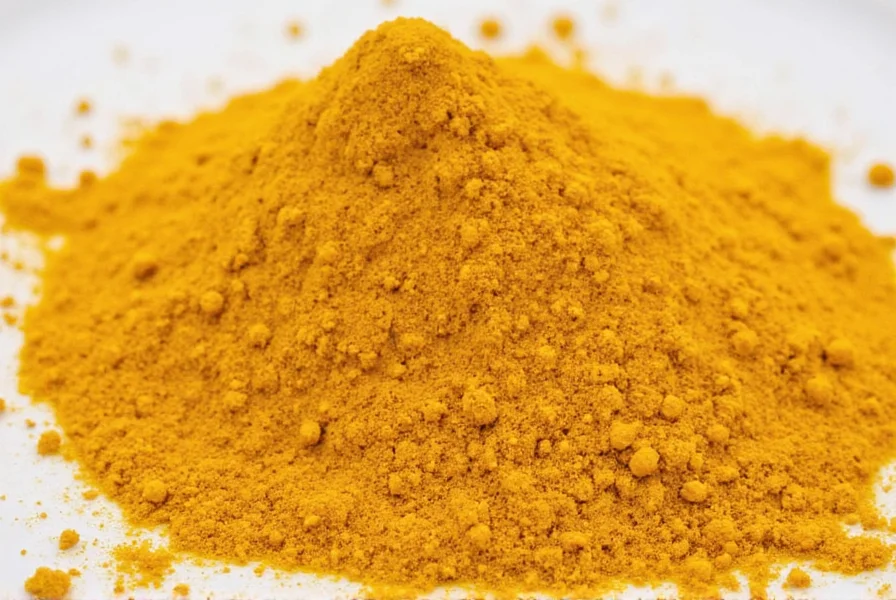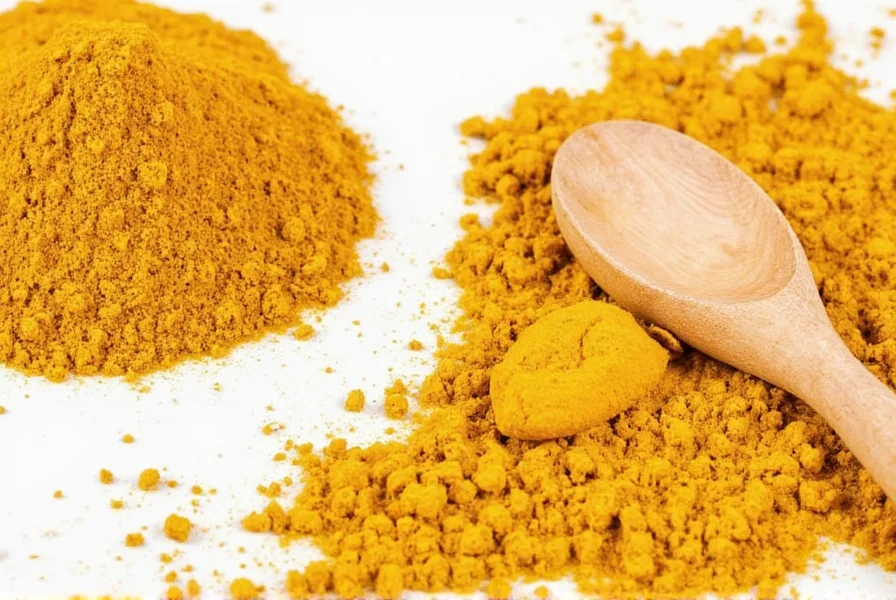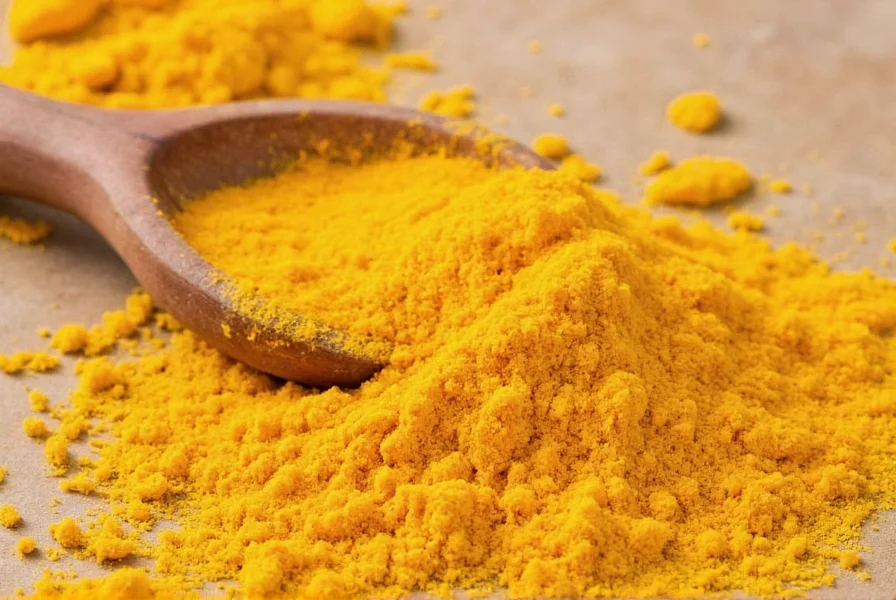When your recipe calls for turmeric but your spice cabinet is running low, knowing effective alternatives can save your cooking project. Turmeric's unique combination of earthy flavor and vibrant yellow color makes it challenging to replace perfectly, but several practical substitutes exist depending on whether you need to replicate its color, flavor, or both properties.
Understanding Turmeric's Dual Role in Cooking
Turmeric serves two primary functions in recipes: providing a distinctive golden-yellow hue and contributing a warm, earthy flavor with subtle bitterness. The active compound curcumin gives turmeric its color and many of its health benefits, while its flavor profile complements both savory and sweet dishes. When seeking a turmeric substitute, first determine which property matters most for your specific recipe.
Best Substitutes for Turmeric Color
If you're primarily concerned with replicating turmeric's vibrant yellow color without necessarily matching its flavor, these alternatives work well:
- Annatto seeds or powder: Provides a similar golden color without significantly altering flavor. Use 1/4 teaspoon annatto powder per 1/2 teaspoon turmeric.
- Safflower: Steep 10-15 safflower threads in warm liquid for 10 minutes to extract yellow pigment. Ideal for rice dishes and sauces.
- Yellow food coloring: Pure color replacement with no flavor impact. Use 2-3 drops per 1/2 teaspoon turmeric.
- Paprika: Adds orange-yellow color but with a slightly sweet, smoky flavor. Use half the amount of turmeric called for.

Best Substitutes for Turmeric Flavor
When flavor is your priority, these alternatives better capture turmeric's earthy, slightly bitter profile:
- Curry powder: Contains turmeric plus other spices. Use 1 teaspoon curry powder for every 1/2 teaspoon turmeric, but reduce other spices accordingly.
- Ginger: Fresh or ground ginger provides warmth and earthiness. Use 3/4 teaspoon ground ginger per 1/2 teaspoon turmeric.
- Mustard powder: Offers similar earthy notes with a slight bitterness. Use 1/2 teaspoon mustard powder per 1/2 teaspoon turmeric.
- Cumin: Provides earthiness but lacks turmeric's bitterness. Use 3/4 teaspoon cumin per 1/2 teaspoon turmeric.
Comprehensive Turmeric Substitute Comparison
| Substitute | Best For | Substitution Ratio | Flavor Impact | Color Impact |
|---|---|---|---|---|
| Curry powder | Both flavor & color | 1 tsp = 1/2 tsp turmeric | Additional spices | Good yellow |
| Annatto | Color only | 1/4 tsp = 1/2 tsp turmeric | Minimal | Excellent yellow |
| Ginger | Flavor only | 3/4 tsp = 1/2 tsp turmeric | Spicy, warm | Pale yellow |
| Safflower | Color only | 10 threads = 1/2 tsp turmeric | None | Good yellow |
| Mustard powder | Flavor only | 1/2 tsp = 1/2 tsp turmeric | Sharp, bitter | Pale yellow |
Situation-Specific Substitution Recommendations
Certain recipes require more thoughtful substitution strategies. For golden milk or turmeric tea, where both color and health properties matter, consider using a combination of safflower for color plus ginger for flavor. When making curry dishes, curry powder remains the most practical turmeric substitute for curry recipes, though you'll need to adjust other spices to prevent flavor imbalance.
In rice dishes or soups where color is primary, annatto provides the closest visual match without altering flavor significantly. For baking applications like golden cakes or cookies, a combination of safflower for color plus a touch of mustard powder for earthiness works best without overpowering delicate flavors.

Important Considerations When Substituting Turmeric
While these alternatives work well in most cooking applications, remember that turmeric contains curcumin, which has documented anti-inflammatory properties. If you're using turmeric primarily for health reasons, substitutes won't provide identical benefits. For culinary purposes, however, these practical alternatives ensure your recipes maintain their intended appearance and flavor profile even when turmeric isn't available.
When experimenting with turmeric substitutes for Indian cuisine, consider the dish's complexity—simple dal or rice dishes can handle straightforward substitutions, while complex curry blends may require more nuanced adjustments to maintain authentic flavor balance. Always add substitutes gradually and taste as you cook, as their potency varies significantly from turmeric's distinctive profile.
Frequently Asked Questions
Can I skip turmeric entirely in a recipe?
Yes, you can omit turmeric, but your dish will lack both its distinctive golden color and earthy flavor. In most savory recipes, the absence will be noticeable but not ruinous. For color-sensitive dishes like rice or sauces, consider using one of the color-focused substitutes mentioned in this guide.
What's the best turmeric substitute for people with allergies?
For those with turmeric allergies, annatto provides excellent color replacement without cross-reactivity concerns. For flavor, ginger or mustard powder work well as alternatives. Always consult with an allergist before introducing new ingredients if you have known spice allergies.
How do I substitute turmeric in curry powder?
To make your own curry powder without turmeric, combine 2 tablespoons coriander, 1 tablespoon cumin, 1 teaspoon ginger, 1/2 teaspoon black pepper, and 1/4 teaspoon cinnamon. This blend provides similar earthiness without the yellow color. Adjust ratios to taste, as traditional curry powder contains turmeric as its primary coloring agent.
Can I use saffron instead of turmeric?
Saffron can replace turmeric for color but not flavor. It provides a similar golden hue but has a distinct floral taste and is significantly more expensive. Use just a few saffron threads per recipe—about 1/8 teaspoon—for color without overwhelming your dish. This makes saffron impractical for everyday cooking but suitable for special occasions.











 浙公网安备
33010002000092号
浙公网安备
33010002000092号 浙B2-20120091-4
浙B2-20120091-4